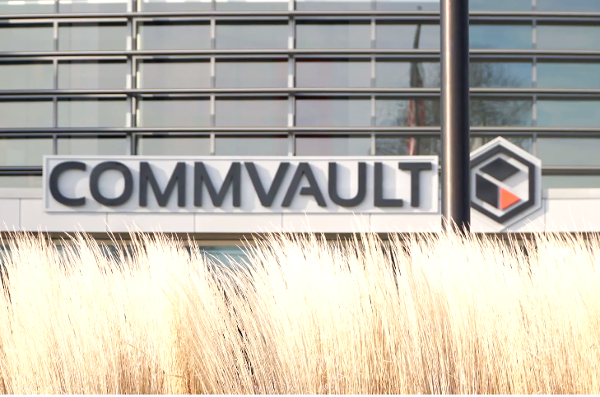 SECURITY
SECURITY
 SECURITY
SECURITY
 SECURITY
SECURITY
Data protection provider Commvault Systems Inc. today announced an integrated cloud offering that combines its various software-as-a-service and packaged software products into a single offering built on the concept of cyber resilience and incorporating artificial intelligence for threat diagnosis and recovery.
That approach combines cyber threat prevention with the ability to recover quickly from events. It combines rapid response, data recoverability and a focus on minimizing the total cost of ownership. The company said its customers can secure and recover their data across any workload, any infrastructure and from any location to any other location.
Commvault Cloud is intended to address the increasing complexity of cybersecurity incidents and the long time needed for recovery. “Customers say in a cyber event they’re no longer dealing with 10 problems; they’re dealing with 1,000,” said Chief Technology Officer Brian Brockway.
Building Commvault Cloud involved reintegrating the Metallic Cloud Storage Service, a cloud-based backup target with an air-gapped option that the company broke out as a separate service three years ago.
“Our strategy was not to move Metallic off to the side but use the incubation zone to take the Commvault platform to the next level,” Brockway said. “We’ve been looking at how do we blend the platforms back into one again so we can take a lot of the advancements in Metallic and bring them forward across the rest of the platform. Metallic starts getting folded back into Commvault under the Commvault Cloud banner.”
One of the core features of the new cloud offering is an artificial intelligence “co-pilot” called Arlie (short for “autonomous resilience”) that assists users with tasks ranging from verifying recovery points to generating code.
“Rather than tell you about the problem and have you come to a conclusion, we provide a proscriptive approach,” Brockway said. “ We retooled our experiences, context and support into something that understands context and what others have done to solve a problem. We don’t just send you another link; we train the environment to make it more self-service oriented.”
Arlie’s backend is integrated with Microsoft Corp.’s Azure OpenAI and will support other generative models in the future. The intention is to make user interaction more intuitive and less technical.
Additional features of Commvault Cloud include real-time analysis of threats and summarized reports, no-code integrations using generative AI, custom walk-throughs that guide users through the process of customizing Commvault Cloud and root cause remediation using AI to detect issues and recommend cyber resilience improvements.
“The new capabilities we’re bringing forward move beyond data protection to cyber resilience,” Brockway said. “It’s about how to make sure all your data is captured and locked down and giving you the automation to assess the scope of what’s happened, purge out the bad and restore the good.”
Another feature, Cloudburst Recovery, leverages cloud scaling to speed up data recovery processes. Cleanroom Recovery is a service that provides a clean, ready-to-use recovery space in the cloud.
“A lot of organizations are realizing they need to be able to quickly take a data set into a secure area without dedicating an entire data center to it,” Brockway said. “The clean room gives you the ability to access compute, storage, elastic cloud and lets you quickly declare, push a button a recreate everything in that domain as quickly as possible. You can now go back and test and validate to where the clean recovery point is.”
Commvault also announced a new service available on a limited basis called Platinum Resilience. It’s intended to provide full protection and quick response to cybersecurity incidents. The service includes foundational backup and recovery and advanced features such as cyber deception and recovery readiness checks on a single control plane. A ransomware readiness and response team is part of the package, emphasizing the company’s commitment to ensuring rapid recovery from cyber events.
Commvault Cloud is initially available on Oracle Corp.’s Cloud Marketplace, Microsoft Corp.’s Azure Marketplace, Google LLC’s Google Cloud Marketplace and Salesforce Inc.’s AppExchange.
In what it said is an effort to build an ecosystem of partners around its cloud, Commvault also announced a set of security and AI partners that have committed to integrate with the new cloud offering. They include CyberArk Software Ltd., Microsoft Corp., Palo Alto Networks Inc., Databricks Inc., Entrust Corp. and Netskope Inc.
The partners extend the functionality of the Commvault Cloud and even include non-security companies like Databricks that bring unique value to security forensics, Brockway said. “Databricks falls more into the search indexing domain,” he said. “If we’re looking through the datasets and find [personally identifiable information] or other concerning data we can look for evidence that the admin created a file with usernames and passwords they weren’t supposed to create.”
Most of the new offerings are targeted for end-of-year release.
THANK YOU